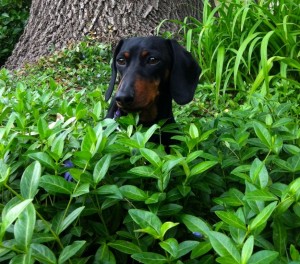Innovation and Dogs
I like to walk our dog, Bella, with our friend Susie, the dog trainer. Susie has taught me a lot about what goes on in a dog’s head and why they behave the way they do. I like Susie but I think Bella likes her even more. Bella loves the attention and, especially, the rewards she gets when she does what Susie asks her to. Rewards range from dog biscuits to a simple pat on the head and a “good dog”.
We see a lot of dogs when we walk and Bella usually gets along well with them. One day, however, we met a bigger dog whose human was holding him very tightly on the lead. The dog clearly wanted to sniff Bella but the human kept tugging backward on the lead. The human seemed nervous; the dog did, too. Bella started to get nervous as well. She shivered a bit and, instead of nuzzling the dog as she would normally do, she back pedaled and moved away.
As we walked away, I asked Susie what that was all about. Susie explained that dogs like to run with a fairly loose leash. When the owner pulls hard on the leash, it’s a signal that he’s afraid of something. There’s danger nearby. The dog looks for the danger and, not seeing any, begins to get nervous. What’s he supposed to defend against? His scent changes and other dogs pick up the fragrance of fear. They too get nervous. Their scent changes and the first dog picks it up and gets more nervous. It becomes a vicious circle and can, in fact, lead to some nasty, aggressive dogs.
So nothing good happens when a group of dogs is afraid. Seems to me that the same is true of people. When a department manager holds the leash too tightly, it sends a signal of fear. Employees sense that something is wrong and they look for the source. If they don’t find anything, they get nervous and worry about what they’re not seeing. Why is the boss acting so weird?
It’s hard to be creative when you’re nervous. I wouldn’t offer up a good idea if I were nervous about how my boss would react. Indeed, I probably wouldn’t even have a good idea. Instead of focusing on creating new projects or products, I’d dissipate my energy worrying about impending doom. My gloom would make my colleagues depressed. Their gloom would further depress me. It’s not a pretty picture.
Ultimately, innovation is based on trust. If I trust that I’ll be treated well, I can spend more time thinking up fresh new stuff. If I think my boss will ridicule my ideas, then I won’t present any ideas. Sarcasm has probably ruined more good ideas than any other single factor. On the other hand, if I trust that my boss will help me develop my ideas, then I’ll present my best stuff, even if it’s not fully baked. It’s pretty simple — if you trust your colleagues and employees, they’re free to do marvelous things. If you want more innovation, just loosen the leash.

First — Bella’s a very nice looking pup!
Related to the innovation topic, there’s merit to considering yet another social element in the mix — that is, caring enough not to care [about repercussions]. Although more often than not in the circumstances portrayed above where the prevailing social and emotional dynamic weighs heavily on innovation, there’s occasionally that special, gifted individual that will boldly speak their mind. They tend to be well respected because they state their case in a thoughtful and respectful way, albeit direct and concise — even if contradictory to the most senior person in the room.
Often, these ‘bold ones’ voice what others in the room are thinking but lack the courage to say, which explains the rush of dialogue that ensues immediately following a ‘green light’ reaction to the message.
I sometimes ponder the tremendous losses wroght by fear … perhaps it makes a case for occasionally taking the risk to ‘lead with one’s nose’ …
Just my opinion … could be wrong …
So what is a terrier personalty? Are some “dogs” are trained bullies,?